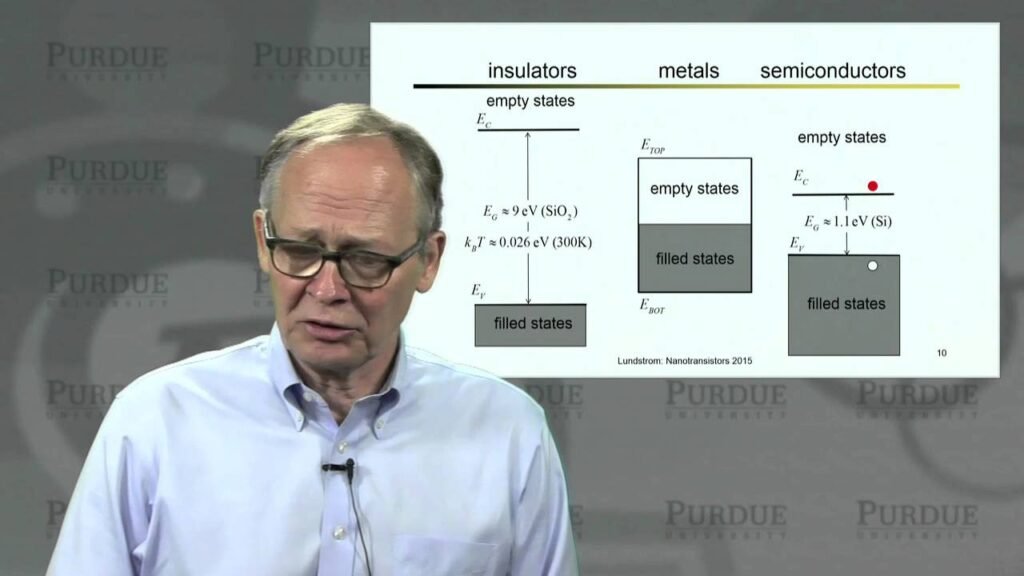Morgen Dautrich is not a household name, but within the highly technical world of semiconductors, his work has meaning. He represents the type of professional whose contributions often fly under the radar yet quietly support industries powering modern life. From the growing field of silicon carbide devices to the daily challenges of engineering in a competitive space, Morgen’s career illustrates how specialized knowledge can shape technology in ways most of us rarely notice.
A Professional in Semiconductors
When someone describes themselves as a “semiconductors professional,” it signals a role that could span research, development, or industry applications. This is exactly where Morgen Dautrich positions himself. His background includes technical involvement in the study of silicon carbide MOSFETs, a class of devices at the cutting edge of electronics.
For context, MOSFETs—metal-oxide-semiconductor field-effect transistors—are the building blocks of much of today’s technology. They function as switches or amplifiers and exist in everything from smartphones to power grids. When these transistors are made from silicon carbide rather than standard silicon, they can handle higher voltages, higher temperatures, and tougher environments. That makes them especially important in industries like electric vehicles, renewable energy, and aerospace.
The Focus on Defects and Reliability
One of Morgen Dautrich’s contributions has been tied to identifying and understanding defects within silicon carbide materials. These defects are known as “deep level centers.” They act like traps inside the material, capturing charge carriers and disrupting the flow of current. For engineers, these defects are a headache because they cause slower switching, energy loss, and even long-term reliability issues.
The work of observing and cataloging these deep level centers may sound abstract, but it has direct implications for the real world. If researchers and engineers can figure out what types of defects exist and how they behave, they can design ways to minimize or compensate for them. That leads to transistors that last longer, run cooler, and operate more efficiently. In the age of electric vehicles and renewable power, that kind of progress is critical.
A Role That Blends Research and Application
Morgen Dautrich’s professional footprint shows the balance many engineers strike between academic-style research and hands-on industry work. On one hand, participating in a scientific publication about defect states in silicon carbide MOSFETs shows a connection to research. On the other hand, presenting himself broadly as a semiconductor professional suggests he has applied his expertise in industry roles as well.
This dual perspective is valuable. The semiconductor field is notorious for moving quickly. A discovery in the lab can translate into better devices in just a few years. Professionals like Morgen bridge the gap, bringing research insights into practical use while also feeding real-world challenges back into scientific study.
Why Professionals Like Morgen Matter
The public rarely hears about specialists like Morgen Dautrich, yet their work underpins technologies we rely on every day. Consider electric cars. A major challenge for automakers is squeezing more miles out of each battery charge while keeping the vehicle safe and affordable. Silicon carbide MOSFETs make it possible to build more efficient inverters and chargers. If those MOSFETs suffer fewer defects, the entire system benefits—greater efficiency, less heat, and longer lifespan.
Or think about renewable energy. Wind turbines and solar farms depend on power electronics that can handle high voltages and massive amounts of current. Again, silicon carbide plays a role, and reliability becomes the difference between profit and loss.
In these contexts, the quiet work of analyzing defects and refining device performance directly shapes global industries. Professionals like Morgen Dautrich may not see their names in headlines, but the ripple effects of their contributions are broad.
The Human Side of a Technical Career
Behind every technical title is a person who chooses to focus their energy on a highly specific domain. Morgen’s choice to dedicate himself to semiconductors reflects both intellectual curiosity and professional demand. Semiconductor careers require patience, problem-solving, and resilience. Progress is often incremental, measured in improved reliability or slightly better efficiency.
What makes such careers rewarding is the knowledge that those small steps accumulate. Over time, they change industries and enable new possibilities. Morgen’s role fits this mold: an expert steadily contributing to advancements that most people will never directly see but will eventually benefit from.
FAQs About Morgen Dautrich
Who is Morgen Dautrich?
Morgen Dautrich is a professional in the semiconductor field. His work has involved the study of silicon carbide MOSFETs and the defects that influence their performance.
What are silicon carbide MOSFETs?
They are a type of transistor made from silicon carbide instead of silicon. This material allows the devices to handle higher voltages and operate more efficiently, especially in demanding applications like electric vehicles and renewable energy systems.
What are deep level centers?
Deep level centers are defects inside the semiconductor material. They act as traps for charge carriers, reducing performance and reliability. Studying them helps engineers build better, more reliable devices.
Why is Morgen Dautrich’s work important?
By contributing to the understanding of silicon carbide defects, Morgen supports the development of more efficient, durable power electronics. This directly impacts industries such as automotive, energy, and aerospace.
Is Morgen Dautrich more of a researcher or an industry professional?
He has participated in research but also identifies broadly as a semiconductor professional. This suggests he blends academic insights with practical industry experience.
Where is he based?
Public information points to Nazareth as a place of residence or professional connection. Beyond that, details are limited.
How can someone connect with him?
The best approach would be through professional networks such as LinkedIn or industry events in the semiconductor space.
Why might someone search his name?
Most likely because of academic citations, professional networking, or curiosity about his role in semiconductor research.


